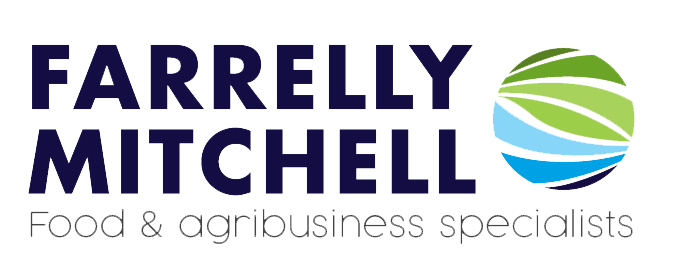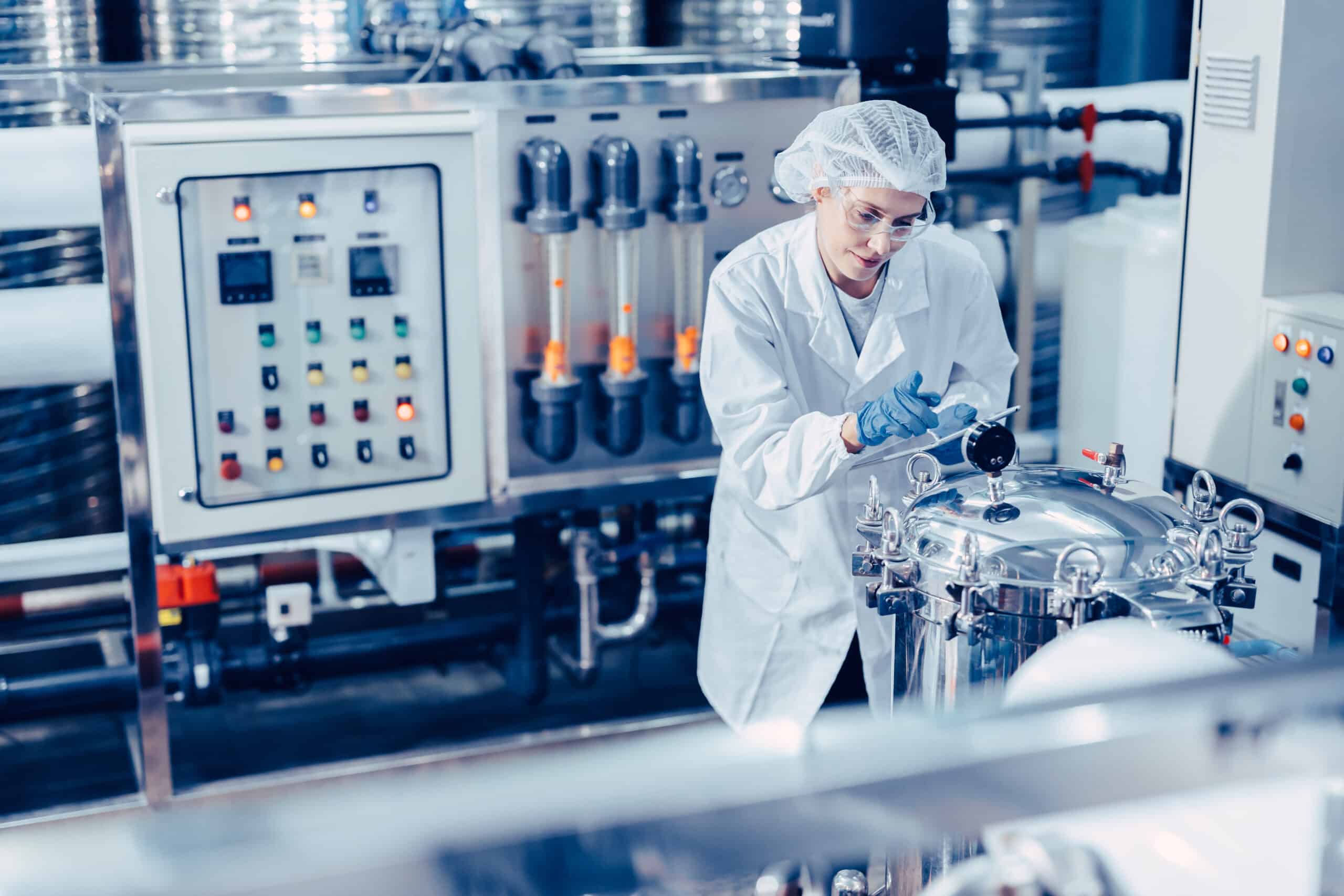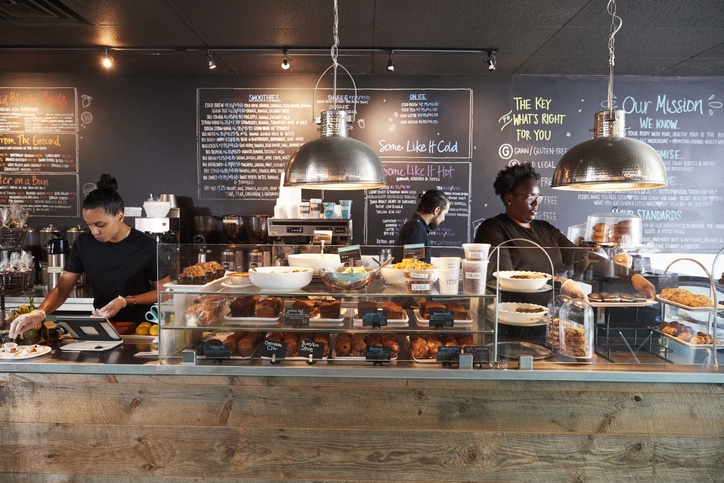With water scarcity intensifying across the world, it has become increasingly important to consider how food and beverage wastewater treatment can be improved to protect this precious resource. Currently, over 2 billion people lack access to clean water, a number that will continue to rise unless stakeholders work together and develop ways to use water more efficiently. With the world needing 40% more water by 2030 to accommodate a growing population, the need for action has never been so urgent.
At the same time, implementing advanced wastewater treatment solutions can involve significant upfront investments in technology, infrastructure, and training. While these measures may be crucial for an organisation’s long-term sustainability and regulatory compliance, they must be balanced with the financial realities of businesses to ensure their economic viability.
This article will outline the current state of food and beverage wastewater treatment, discuss the numerous technological advancements that have been made in this sector, and weigh the efficacy of conventional and circular water systems.
Issues affecting food and beverage wastewater treatment
Advancing wastewater treatment and recycling is possible with existing technologies, but scalability and mass adoption is far from straightforward. Regulatory restrictions, social resistance, and budgetary limitations present obstacles for the effective reuse of wastewater across the world. However, if these practices are to become the norm, then the food and beverage industry must find a way to navigate past these challenges.
The first challenge relates to water quality regulation. When looking to recycle wastewater, businesses must comply with standards for reusing discharged water. This can significantly restrict their ability to repurpose treated water, as effluent water is typically regulated by local councils. Requirements can be quite onerous and can greatly inhibit food and beverage wastewater treatment.
From a cultural perspective, it is also difficult to reuse wastewater in any applications that involve human consumption, even irrigation. Public resistance to ingesting discharged water is strong and often prohibitive. General perceptions of discharged water being inherently unsafe is still prevalent. Despite significant advancements in treatment technologies this stigma greatly hinders many wastewater reuse options. Fortunately, numerous non-consumable applications exist within the industrial, agricultural, and municipal sectors, some of the most common examples include equipment cooling, soil fortification, and landscaping.
The viability of food and beverage wastewater treatments are also affected by budgetary considerations. Water recycling technologies require substantial investment in infrastructure and equipment. Such costs may be prohibitive, although the technologies employed often recoup their investment over the mid to long-term.
Food and beverage wastewater treatment technologies
Biological treatment
Widely used in food and beverage wastewater treatment, biological treatment leverages natural microbial processes in organic matter to treat water. It is a sustainable choice for businesses looking to reduce their environmental footprint. Common processes include aerobic and anaerobic treatments as well as membrane bioreaction.
Aerobic treatment introduces oxygen to support bacteria that effectively break down contaminants and reduce pathogens. While effective and cost-efficient, it requires considerable energy for the aeration process, and produces a lot of sludge, which requires further processing. As such, this method is most suitable for wastewater with limited organic loads and colder water.
By contrast, anaerobic treatment is a highly efficient, oxygen free method, ideal for heavier loads like manure or effluents from food processing. This method produces biogas as a byproduct, which is caused by anaerobic bacteria digesting the sludge. While this treatment is more efficient than the aerobic method, anaerobic systems tend to be slower, and often require more capital upfront, depending on the operation.
Membrane bioreactors (MBRs) are another form of biological treatment that combine aerobic or anaerobic processes with physical filtration. This produces reusable effluent, suitable for irrigation. MBRs are especially popular for winery wastewater treatment and recycling. Being a more complex system, MBRs inevitably require more capital investment and maintenance, but they remain the most efficient and compact method of treating reusable wastewater for most food and beverage businesses.
Physiochemical treatment
By combining physical and chemical processes to remove contaminants from food and beverage wastewater, physiochemical treatments help improve wastewater containing both dissolved and suspended solids or hazardous substances.
One of the most popular physicochemical methods is coagulation-flocculation, a process where added coagulants cause particles to clump together into larger, easily removable flocs. Requiring inexpensive and abundant chemicals, and taking no longer than an hour, this method has emerged as one of the most widely adopted treatments for industrial wastewaters. However, it is important to consider its shortcomings. Aside from the excess of toxic sludge this method yields, the performance can also vary depending on the wastewater composition, and so it requires constant attention from trained personnel.
Another common method used in food and beverage wastewater treatment is the advanced oxidation process (AOP). In this process, strong oxidants like ozone, hydrogen peroxide, or ultraviolet light are used to break down and neutralises both organic and inorganic pollutants. AOP is especially effective for treating stubborn compounds that are resistant to traditional biological methods, helping facilities meet regulatory discharge limits. One key advantage for this method is that it does not produce sludge, eliminating the need for post-treatment management. However, high investment and operating costs as well as substantial energy consumption, and the use of expensive chemical reagents have curtailed its adoption. Consequently, AOP is typically reserved for applications where its ability to treat stubborn compounds, are essential to meet stringent discharge regulations or where traditional treatment methods fall short.
Other physiochemical treatments include reverse osmosis (RO) and nanofiltration (NF). These two techniques are regularly used to remove dissolved ions and reduce overall salinity in wastewater, allowing it to be repurposed or safely discharged. One of the key benefits to these methods is that they are adaptable to other treatment processes, reducing the need for chemical treatments and space required to treat wastewater.
Electrochemical treatment
Electrochemical treatment is a versatile and energy-efficient wastewater treatment method that uses electrical currents to induce chemical reactions that neutralise or remove contaminants. The technology used here is electrocoagulation—a process in which electric currents pass through metal electrodes submerged in wastewater. When electrocoagulation occurs, metal ions dissolve, react with pollutants, and create precipitates which then can be removed through sedimentation or flotation.
Besides electrocoagulation, electrochemical oxidation is used to degrade complex organic contaminants that are resistant to biological treatment. By applying a current, this process generates oxidising agents such as chlorine, hypochlorite, or hydroxyl molecules that break down pollutants into harmless compounds. As electrochemical techniques can be configured to treat various pollutants selectively, they are highly adaptable, and capable of treating virtually any wastewater from food and beverage facilities regardless of its composition or complexity.
From a business perspective, this method is excellent for simultaneously removing pathogens, heavy metals, and organic pollutants. It is also a considerably more sustainable solution due to low rates of secondary pollution and chemical waste. However, like many other methods, initial upfront investment is a serious hurdle for many operations looking to implement it. This can be further compounded by high energy and maintenance costs.
Conventional vs circular water systems in food and beverage wastewater treatment
Conventional water systems typically follow a linear model, where water is extracted, used, treated, and then discharged back into the environment, often with minimal reuse. Because this approach depends on a consistent fresh water supply, it can strain local water resources—especially in regions where water is scarce. To make matters worse, it often produces wastewater as a byproduct, which can lead to further pollution and waste.
Circular water systems focus on closed-loop, sustainable water use. With these systems, wastewater is treated and repurposed within the facility for various purposes, such as irrigation, cleaning, and processing. In effect, these systems minimise water loss and reduce environmental impact by creating a cycle where water is continuously reused. As food and beverage businesses seek to reduce water consumption and minimise waste, circular water systems are rapidly gaining traction. A prime example of this would be the Carlsberg’s Fredericia brewery in Denmark which has implemented an advanced water recycling system that has saved approximately one billion litres of water after two years of operation. Their system allowed the facility to treat 90% of its process water, reducing its overall water consumption by 50%.
Achieving sustainability goals in food and beverage wastewater treatment
The need for effective wastewater treatment in the food and beverage industry has never been more pressing. As water scarcity intensifies and demand grows, sustainable wastewater solutions are essential for reducing environmental impact and ensuring continued access to water.
At Farrelly Mitchell, we understand the complexity of food and beverage wastewater treatment, and our team specialises in providing tailored strategies that reduce waste, pollution, and water dependency for our clients. Contact our food and beverage consultants today, to explore how sustainable wastewater practices can elevate your business’ environmental and operational performance.














